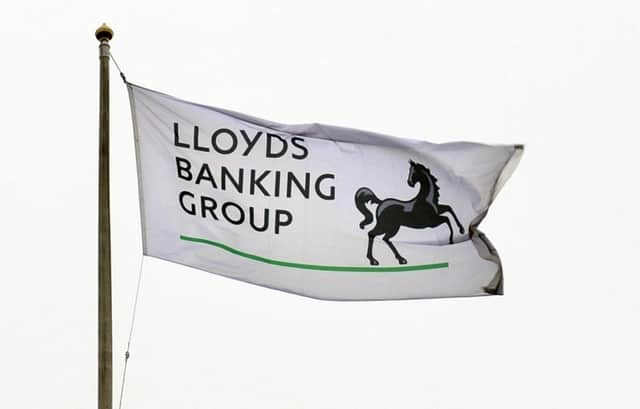George Osborne hails latest sale of Lloyds shares


Chancellor George Osborne, who kicked off the new phase of drip-feed sales of shares in the group in December, said yesterday the latest reduction of the state holding was “fantastic news”.
He added: “I am determined to build on this success, and to continue to return Lloyds to the private sector and reduce our national debt.”
Advertisement
Hide AdAdvertisement
Hide AdTogether with earlier sales, the taxpayer has now recouped about £12 billion of the £20.5bn spent bailing out the group during the financial crash of 2008.
The Treasury has reduced its stake by nine percentage points over the past five months. When the plan was unveiled its holding in the bank was 24.9 per cent, compared with a 41 per cent high water mark at the time of the bailout.
The UK government’s stake in the bank now stands at 15.9 per cent, after selling the latest 1 per cent stake, or 691m shares.
A Lloyds spokesman said that the share sale announcement “shows the further progress made in returning Lloyds Banking Group to full private ownership and enabling the taxpayer to get their money back.
“This reflects the hard work undertaken over the last four years to transform the group into a simple, low-risk and customer-focused bank that is committed to helping Britain prosper”.
Last month, the government confirmed it would also launch a multi-billion pound “Tell Sid”–style Lloyds share sale open to retail investors within the next 12 months, following a previous pledge by the Chancellor.
“Tell Sid” was the marketing slogan of the highly successful British Gas privatisation in 1986. Speculation is that the Lloyds retail investor sale will take place next March after the completion in December of the current trading plan aimed at City institutional investors, and following publication of the group’s 2015 annual financial results.
Lloyds shares are trading at about 86p, comfortably above the 74p average taxpayer buy-in price. A price of 61p is registered in the Treasury for taxpayer break-even, the lower figure taking into account the money paid by the group to the government in fees.
Advertisement
Hide AdAdvertisement
Hide AdFor every 1p upwards movement in the Lloyds share price above 61p it gives the taxpayer a profit of £275m. Osborne said earlier this month that he was also planning to launch the sale of shares in fellow bailed-out lender Royal Bank of Scotland, which is 79 per cent owned by the state. The City has welcomed the gradual and lowkey Lloyds selldown, as fund managers say it is being done in digestible chunks that avoids sparking volatility in the bank’s share price.
Speaking at the lender’s shareholder AGM recently, chairman Lord Blackwell said the government could conceivably complete its exit within 12 months.
“It’s possible and would be very desirable,” Blackwell said. “Whether the government can achieve that depends on the market conditions.”
Lloyds, which owns Bank of Scotland and Scottish Widows, restored the dividend for 2014 after a six-year gap ordered by the EU in return for its state aid.
Under chief executive Antonio Horta-Osorio, the bank also posted a 21 per cent jump in underlying pre-tax profits to £2.2 billion in the first three months of its new financial year. Bad debts fell nearly 60 per cent to £177m in the quarter, as the bank forecast they should fall farther this year more than previously expected.